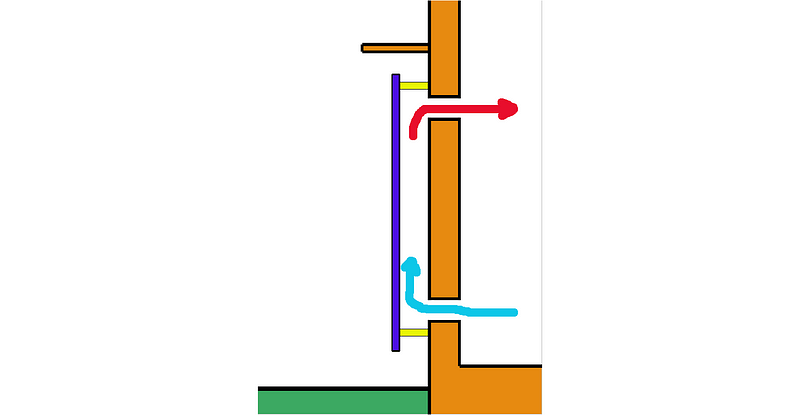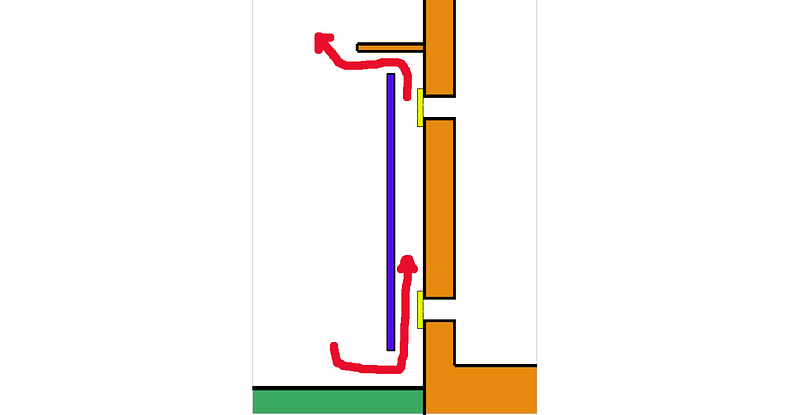Innovative Trombe Walls: A Sustainable Solution for Energy Efficiency
Written on
Understanding Trombe Wall Technology
As awareness grows about the critical need to cut greenhouse gas emissions, businesses are increasingly focusing on enhancing their energy efficiency. This can be achieved through various methods, including:
- Direct emission reductions during manufacturing and transportation.
- Decreasing indirect emissions associated with energy production, particularly from fossil fuels.
- Minimizing other indirect emissions throughout the supply chain, such as managing waste effectively.
While these strategies are often applied to companies, they can also be integrated into our everyday lives. For instance, we can:
- Opt for train travel instead of flying to minimize direct emissions.
- Source electricity from renewable providers to lower indirect emissions.
- Compost organic waste at home rather than sending it to a landfill.
One impactful initiative involves improving the energy efficiency of our homes. This can be accomplished by insulating walls and installing heat-absorbing Trombe walls. The following video illustrates how a Trombe wall functions in residential settings:
The Advantages of Trombe Walls
Trombe walls present a compelling approach to reducing greenhouse gas emissions due to several key advantages:
1. Simple and Low-Maintenance Design
The primary benefit of Trombe walls is their straightforward, maintenance-free design. Comprising a solid wall, a transparent outer layer, and an air gap, these structures efficiently capture and store solar energy. Typically painted in dark colors to absorb more heat, the glass layer facilitates warming of the air within the channel. The accumulated heat is then released into the adjacent room, providing warmth without complex mechanisms.
Although the basic concept is easy to grasp, the specifics may vary based on geographic and climatic conditions. For example, systems in extreme climates must be designed to withstand temperature fluctuations. Additionally, factory installations might require less complexity than residential ones, as indoor comfort is a lesser concern.
Given the simplicity of the materials involved—primarily glass and masonry—greenhouse gas emissions during production are minimized. Furthermore, as these materials are widely available, local sourcing is possible, reducing transport-related emissions. Once operational, Trombe walls require no maintenance, ensuring no additional emissions are generated.
In this video, you can observe a simulation demonstrating how a Trombe wall effectively warms air in a room:
2. Energy Efficiency for Heating and Cooling
Trombe walls significantly cut down the energy required for both heating and cooling. During sunny days, the wall absorbs solar energy, warming the air which is then gradually released into the cooler room. Additionally, due to pressure differences, warmer air is naturally drawn into the colder spaces, enhancing the heating effect, which can be amplified with a fan.
The following image illustrates this air movement: cold air enters the wall and returns as heated air, demonstrating the system’s efficiency.

In warmer months, the same design can help keep homes cool. By closing the valves, the cold air remains inside while hot air is kept outside, reducing the need for air conditioning during peak heat.

3. Utilizing Renewable Energy
The third advantage of Trombe walls is their reliance on renewable energy. Solar energy, which replenishes itself quickly, is harnessed without emitting greenhouse gases during operation. While Trombe walls are most effective in sunny regions, they can still provide benefits in less sunny areas by preheating air or integrating storage solutions that maintain heat availability.
Conclusion
In summary, Trombe walls represent an innovative solution for reducing greenhouse gas emissions through their simple design, energy-efficient heating and cooling capabilities, and utilization of renewable solar energy.
Action Steps for Energy Efficiency
Here are some practical actions you can take to enhance energy efficiency:
- Implement a Trombe wall in your home.
- Insulate your home's walls and roof.
- Lower the heating temperature in your living spaces.
Which of these strategies can you incorporate into your daily routine? Do you have additional suggestions for reducing energy consumption? We invite you to share your ideas in the comments to inspire others.
Credit
This article draws from:
Prozuments, A., Borodinecs, A., Bebre, G., & Bajare, D. (2023). A Review on Trombe Wall Technology Feasibility and Applications. Sustainability, 15(5), 3914.